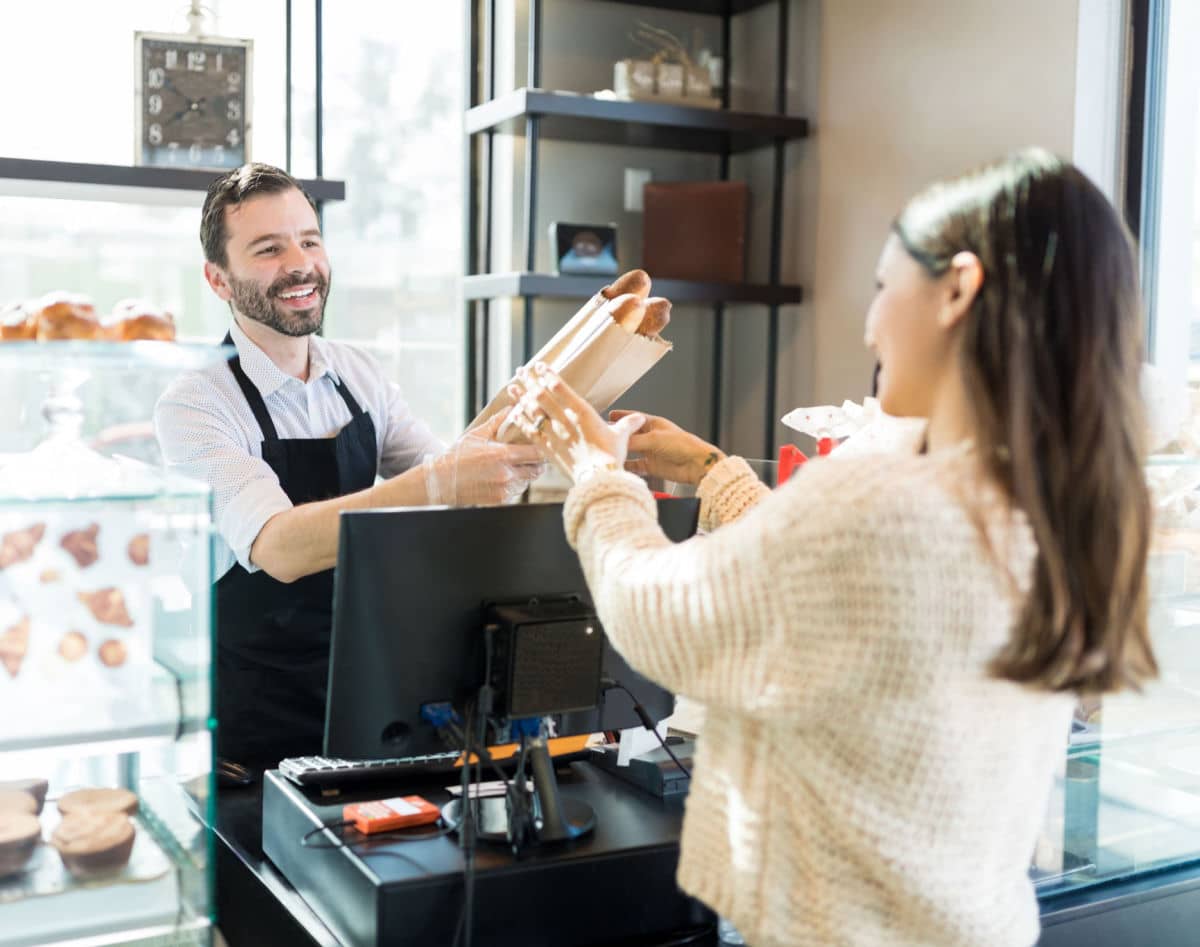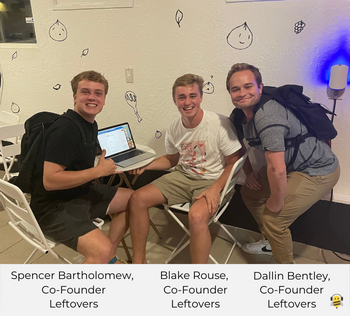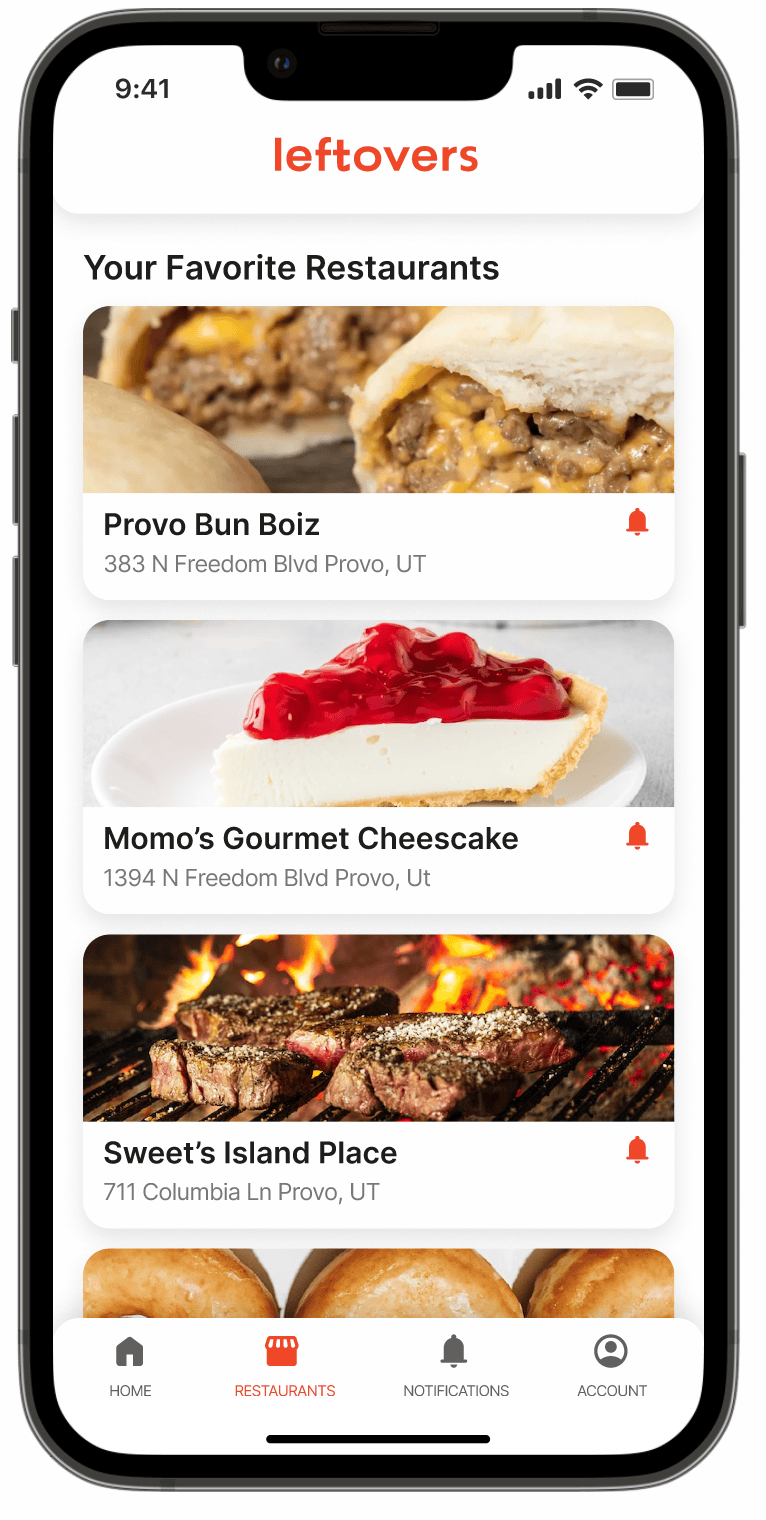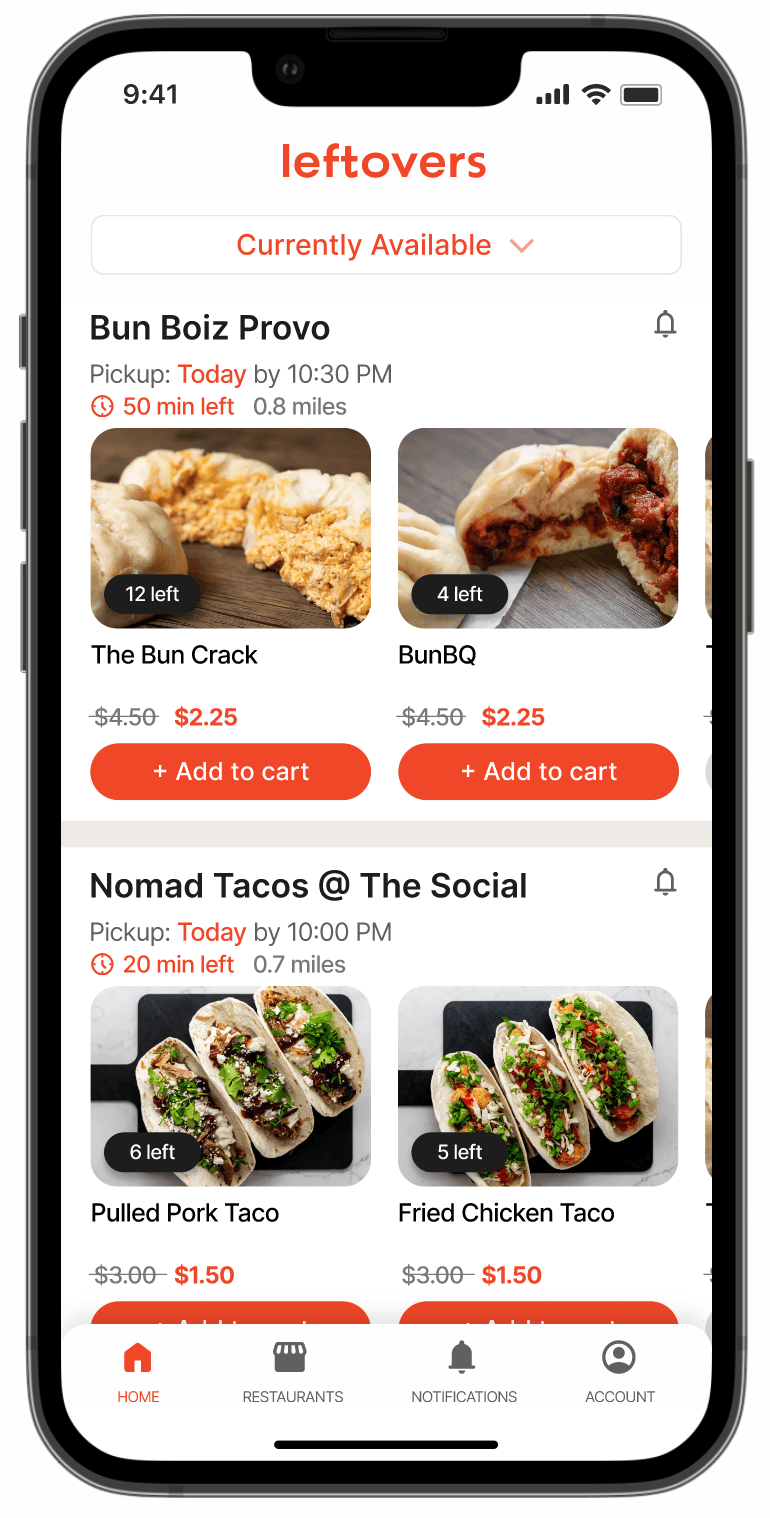

Returning from a stint abroad, Blake Rouse began pursuing pre-med for his undergrad. However, he soon realized that his true passion lay elsewhere. Joining the Rhino Labs startup, and getting his feet wet in the SaaS landscape, Blake unwittingly embarked on his path towards Leftovers.
 Through connections at Rhino Labs, Rouse fell into BYU’s Sandbox program, an incubator providing resources to students to found their own tech startups. He proactively began seeking a team, grabbing lunch with other Sandboxers before the year began.
Through connections at Rhino Labs, Rouse fell into BYU’s Sandbox program, an incubator providing resources to students to found their own tech startups. He proactively began seeking a team, grabbing lunch with other Sandboxers before the year began.
Rouse was introduced to Spencer Bartholomew, one of BYU’s gifted software engineers, during his search. They hit it off, became fast friends, and even worked on a few projects together.
Dallin Bentley met Bartholomew at a Sandbox hackathon. The two “connected over engineering” and stayed close. Following the hackathon, Rouse, Bartholomew, and Bentley all got together and decided to form a team. Reflecting on their easy friendship, Bentley told  TechBuzz “we actually all were at Spencer's wedding. It was super fun. They had this pool in the venue and the whole party jumped in. Everyone was going crazy, and they even got a video of his grandma jumping into the pool.” Rouse adds, “The most important thing to us was the team. It’s more important than our product, idea, or anything.” Once they landed on their team, it was time to build the product.
TechBuzz “we actually all were at Spencer's wedding. It was super fun. They had this pool in the venue and the whole party jumped in. Everyone was going crazy, and they even got a video of his grandma jumping into the pool.” Rouse adds, “The most important thing to us was the team. It’s more important than our product, idea, or anything.” Once they landed on their team, it was time to build the product.
The three founders worked long hours creating several scrappy products to test in the market. They began with a sales tool for account executives, and although it enjoyed some initial success, the project eventually fizzled out. Undaunted, the team continued, looking for a promising, purpose driven project. This is when they landed on Leftovers.
The team observed that surplus food at the end of the day is a common pain point for restaurants. These stores lose money at the dumpster and contribute to the social and ecological dilemma of food waste. The team also noted a growing need for discounted food in an inflationary, recessing economy. These conditions led the students to launch their internet marketplace for surplus food.
 Using their client, Great Harvest, as an example, Bentley explained the mechanics of Leftovers, “after closing, they say, ‘Hey, we have two loaves of Artisan sourdough, three Cinnaburst bread, and one wheat roll left.’ Then, they publish their surplus items on our site. Immediately, the items become live on our public marketplace for our 4,000 consumers” Consumers see the listings, place a pickup order, and come into the store to claim their discounted food.
Using their client, Great Harvest, as an example, Bentley explained the mechanics of Leftovers, “after closing, they say, ‘Hey, we have two loaves of Artisan sourdough, three Cinnaburst bread, and one wheat roll left.’ Then, they publish their surplus items on our site. Immediately, the items become live on our public marketplace for our 4,000 consumers” Consumers see the listings, place a pickup order, and come into the store to claim their discounted food.
The system seems rather straightforward, but is it really working? Apparently it is. Bentley told the TechBuzz team with a smile “popular restaurants sell out very quickly, within about five minutes every single time!”
Restaurants are loving it too. Not only are they recouping sunk costs, but “about half the people that go in to pick up a Leftovers order at Great Harvest buy another item because they're not getting everything they want,” says Bentley.
Some restaurants have worried that using Leftovers will be a burden for employees, causing them to stick around past closing to distribute pickup orders. The Leftovers system solves this with their strict pick-up time window. If customers don’t show up for their prepaid pickup order, the excess food goes where it was already going, the dumpster.
 Speaking with the owner of Provo’s beloved Bun Boiz restaurant, Jimmy Watson, the Leftovers team learned that by selling his excess products on the Leftover’s platform, Bun Boiz never loses money. In fact, they always break even. For precisely this reason, restaurants are ecstatic about Leftovers. Before, excess food meant incurring big losses. Now, even if Watson couldn't sell a single bun during regular store hours, but sells out on Leftovers at 9:45pm, as he always does, he’ll break even. For restaurant owners, no more days in the red is a big deal.
Speaking with the owner of Provo’s beloved Bun Boiz restaurant, Jimmy Watson, the Leftovers team learned that by selling his excess products on the Leftover’s platform, Bun Boiz never loses money. In fact, they always break even. For precisely this reason, restaurants are ecstatic about Leftovers. Before, excess food meant incurring big losses. Now, even if Watson couldn't sell a single bun during regular store hours, but sells out on Leftovers at 9:45pm, as he always does, he’ll break even. For restaurant owners, no more days in the red is a big deal.
Leftovers has not yet launched their app. Currently, their customers receive an alert text with links to their website where they can make a purchase. Thinking to the future, Rouse remarked, “we've outgrown our texting solution, so that's what restricts us from being able to sell them out faster”. The team is looking to mid-December to launch the app, hoping to have it slick as a fish in January.
The app will exponentially improve the customer and restaurant experience. As a result, the team expects serious growth in customer and restaurant adoption in the coming months.
In the face of all this growth, the question of funding always arises for startups. Rouse explained, “currently we are bootstrapping completely through our pre-seed. We could raise if we wanted to, but we are already, from a revenue and growth perspective, passing a pre-seed round.” The Leftovers team is committed to build their platform using their deep talent and university resources.
As this company gains traction, and their rapidly growing customer base expands, foodies and restaurants alike will reap the benefits.

